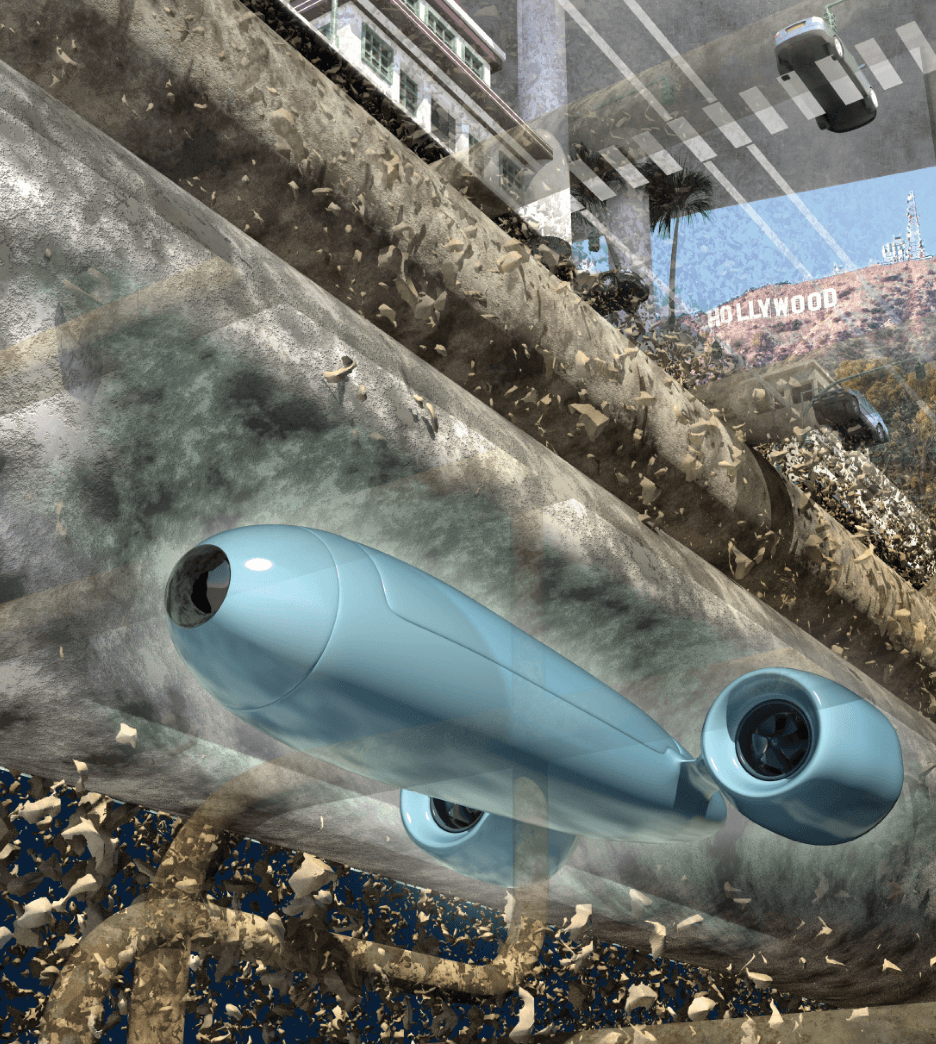What Lies Beneath: A Robot That Patrols Pipes to Detect Underground Leaks

Far beneath the streets and sidewalks of Los Angeles lies a rarely seen subterranean world — a labyrinthine network of pipes extends 7,200 miles across the city, carrying drinking water to more than four million people every day. But within this warren of pipes, trouble is brewing.
Like many cities in the United States, L.A. is facing a looming crisis over its aging water infrastructure, and fixing it will be a monumental and expensive task. At least two-thirds of the city’s underground pipes are more than 60 years old, and most will reach the end of their useful lives within 15 years. This can cause a host of problems, from burst pipes and loss of water service, to road closures, sinkholes and even potential water contamination.
The problem surfaced in spectacular fashion in 2014, when a 90-year-old water main broke under Sunset Boulevard near the UCLA campus, deluging the area with 10 million gallons of water. But locating tiny leaks in underground pipes before they become catastrophic is currently akin to finding a needle in a haystack.
Enter PipeFish, an autonomous robot that could quickly and inexpensively find faults in water pipes, even those buried meters below the ground. Developed by a team at USC’s Information Sciences Institute (ISI) Polymorphic Robotics Lab, led by Wei-Min Shen, ISI research director and USC Viterbi research associate professor, PipeFish could enable early fault detection and repair, ensuring clean, safe drinking water for homes and businesses across L.A. and beyond.
PipeFish Vital Statistics
Constructed of plastic and other rigid materials, PipeFish features a 360-degree camera, lights, sensors and navigation technology controlled by an onboard computer. It measures 20 inches to 30 inches in length and 3 inches to 6 inches in diameter. Designed to be fully autonomous and untethered, PipeFish could freely explore a complex network of underground water pipes without human assistance.
How does PipeFish enter and exit the water system?
PipeFish enters the water system through existing fire hydrants and follows the path of the pipeline to its final destination, where it is “caught” by — you guessed it — a net. The video footage captured is then uploaded and analyzed, providing operators with a 360-degree virtual reality interior view, without ever setting foot inside the pipe.
Can PipeFish get lost?
PipeFish travels through a closed system of industrial pipes, so it won’t lose its way — or appear unexpectedly in your sink or bathtub. The robot is also equipped with a sensor system (think microchipping a pet) that allows operators to track its position as it moves through the network.
What is PipeFish looking for?
Signs of damage inside the pipe, such as cracks, high corrosion or rust. These indications of damage can help authorities prioritize repairs without expensive and disruptive excavation or water service interruptions.
What’s wrong with current inspection systems?
Current tethered snake cameras are difficult to control and have limited range. In addition, sections of the pipeline may need to be shut down during inspection, potentially disrupting water services. Sensors are costly and ineffective, since sensor signals cannot effectively pass through thick infrastructure pipes constructed from metal and cement.
Meet PipeSnake
PipeFish’s companion, dubbed PipeSnake, comprises several PipeFish robots tethered together using flexible joints. Shen and his team are developing PipeSnake to handle the complex twists and turns in an underground water network.
Key players
The ISI researchers are working with the Los Angeles Department of Water and Power to develop and test the robot. In 2017, support for the project came from real estate magnate and philanthropist Michael Keston, who, with his wife, Linda, created ISI’s first endowed directorship position.
When will PipeFish be deployed?
Last year, Shen and his team conducted “dry tests” in pipes at the LADWP Sylmar West Facility in the San Fernando Valley. This year, the team plans to add water to the system and test the robot in different pipes of various diameters under the streets of Los Angeles.
What else could it detect in the future?
PipeFish could be equipped with additional sensors to collect more information, including water flow rate, gas space, illegally dumped chemicals and flammable materials. Ultimately, the team hopes a “school” of PipeFish robots could be programmed to traverse specific paths.



